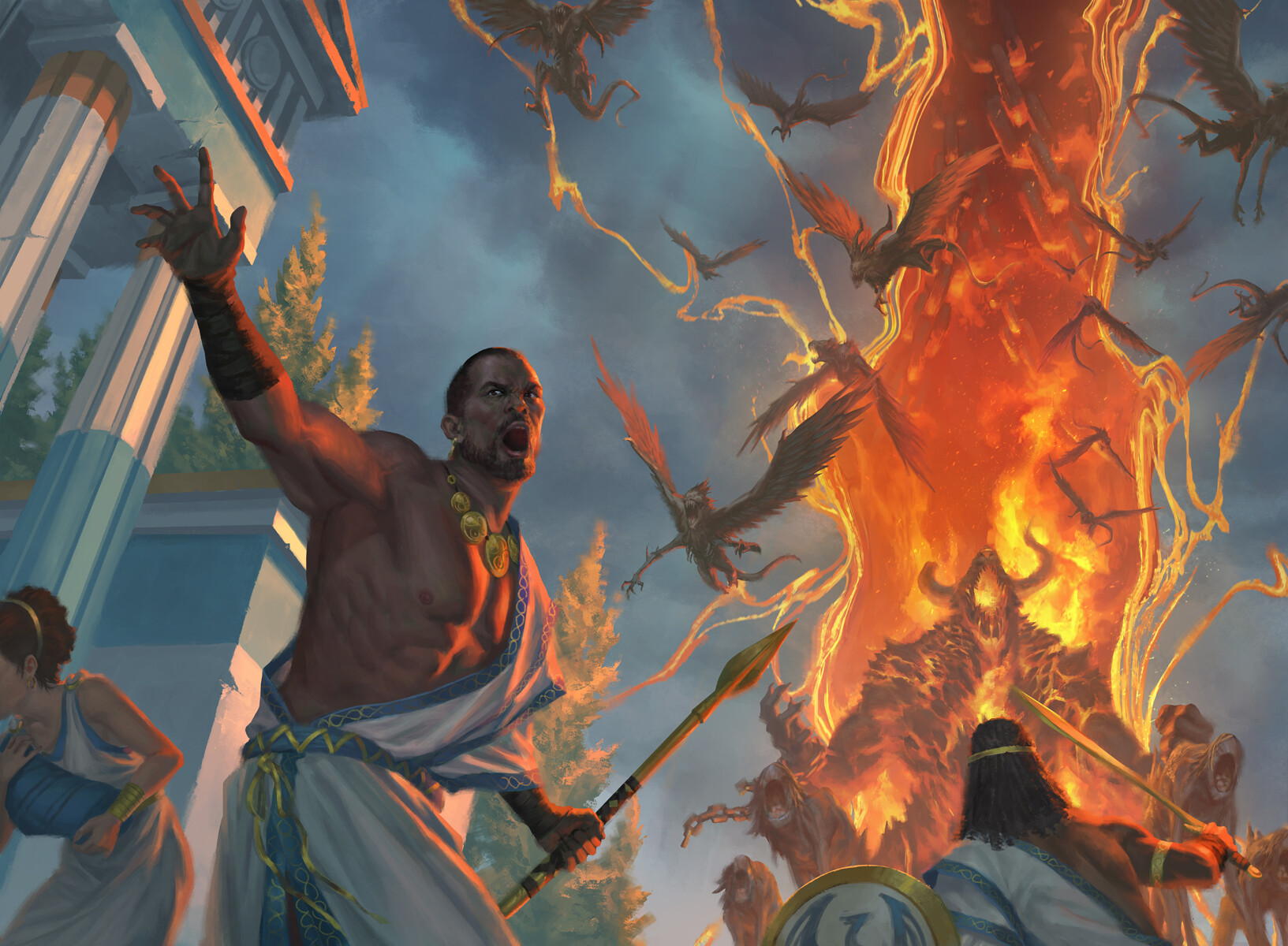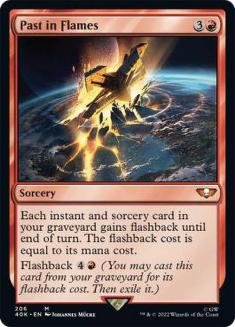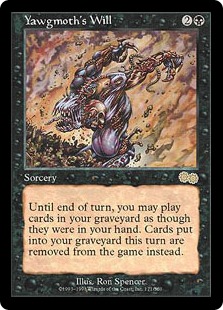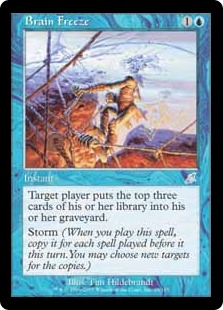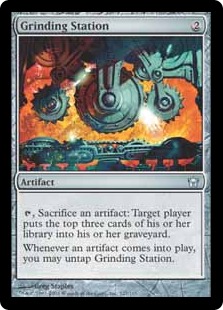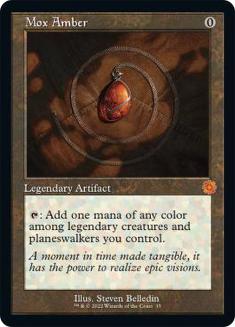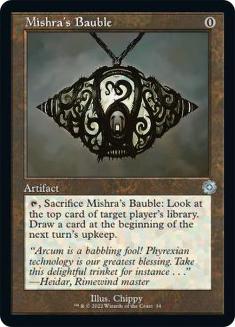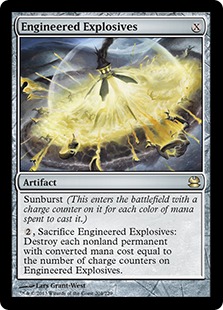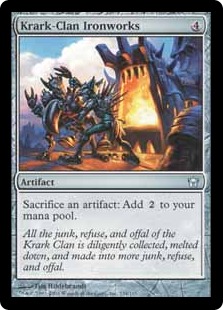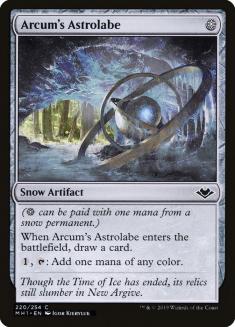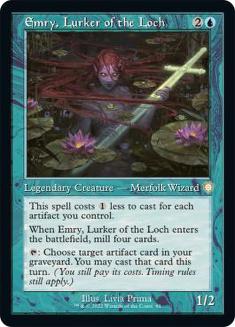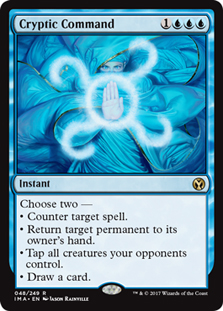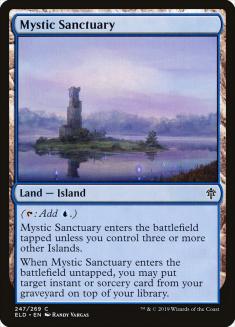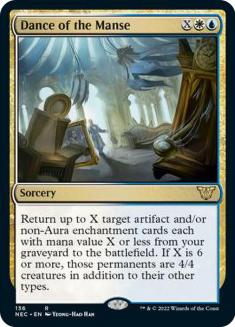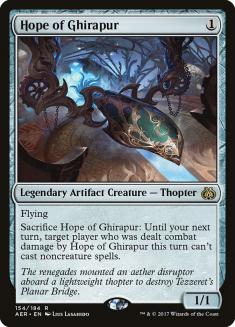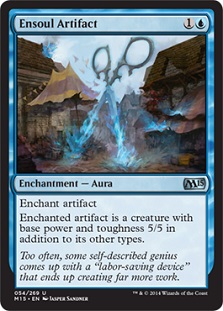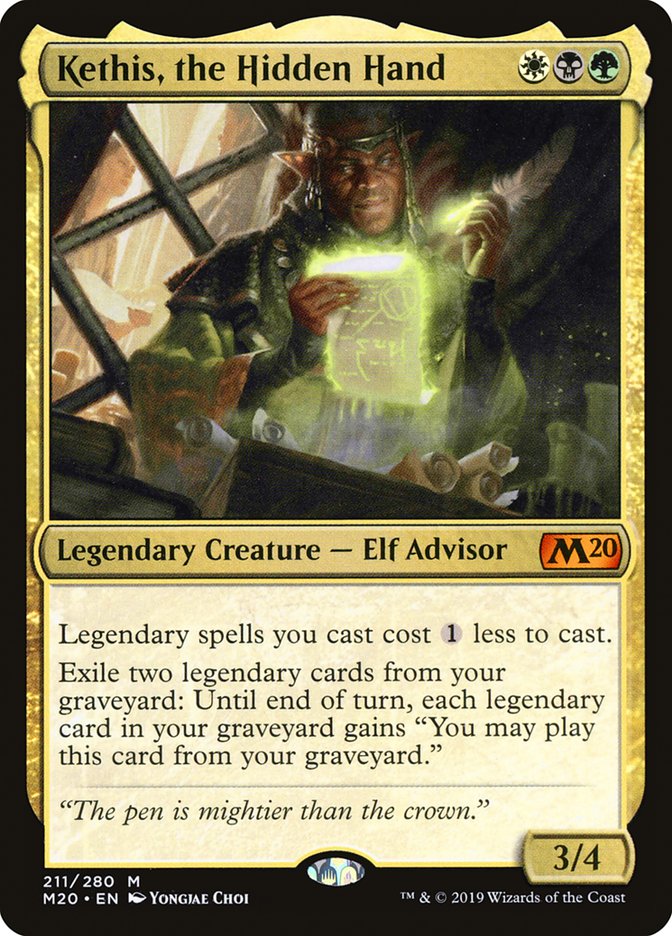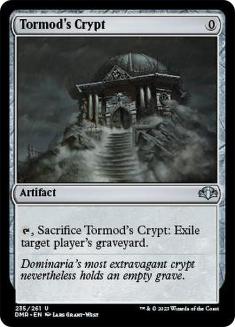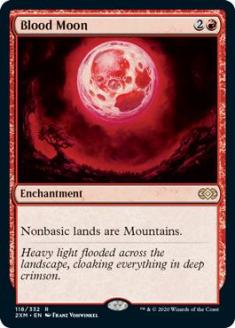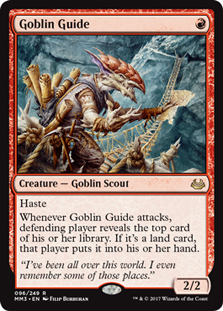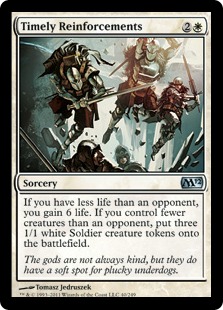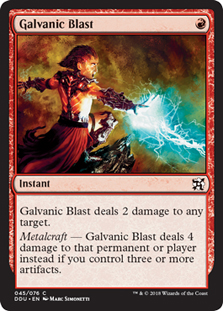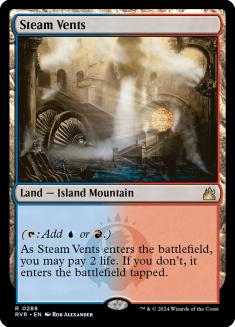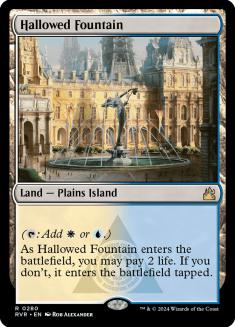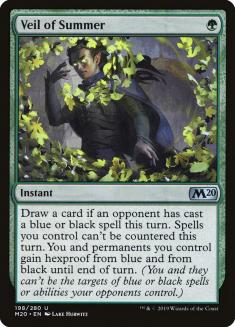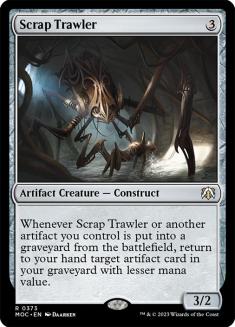We’ve finally gotten there. Modern’s flavor of busted-in-half Underworld Breach deck is here, courtesy of Pascal Maynard:
Creatures (5)
Planeswalkers (3)
Lands (21)
Spells (31)

Was there anyone on Earth that didn’t take one look at Underworld Breach and know that something was going to go wrong? Low-cost graveyard recursion effects being busted in half isn’t exactly a secret.
For the last few weeks, each format that features Underworld Breach has tasked itself with finding the best way to actually create some sort of loop with the card. Once a loop is established, it’s fairly academic to find some way to win.
Both of the things asked of Breach decks in Pioneer and Legacy are similar to what other decks have been doing, with Breach giving the deck the extra juice it needed. In Pioneer’s case, Underworld Breach augmented the Lotus Field deck. By simply adding a Tome Scour to the Fae of Wishes package and changing the mana a bit, it’s easy to use Tome Scour to fuel the graveyard and seal the deal with Hidden Strings producing mana. In Legacy, it’s similar to the various Lotus Petal and Lion’s Eye Diamond-fueled Storm decks, with Brain Freeze being the tool that fills the graveyard.
The Underworld Breach deck isn’t quite as close to a single archetype as the aforementioned examples, but Grinding Station offers similar incentives to other successful decks in the format’s history.
Borrowing from the Past
Once the deck has a copy of Grinding Station and controls Underworld Breach, it can simply cast one of its zero-mana artifacts, throw it in the Grinding Station, exile the freshly milled cards to recast the artifact, and so on. Does looping zero-drop artifacts with a Fifth Dawn artifact sound familiar?
This deck isn’t Ironworks, but a good chunk of the hurdles that Grinding Station presents are jumped by the same cards. Engineered Explosives being a combo piece and an interactive tool is something I’ve already written about when talking about Ironworks. The only things that’s really changed in the time since then is the details of which decks see play.
The comparison to Ironworks isn’t everything, however, as the card didn’t experience the boost of power that eternal Magic saw in 2019:
Now, rather than having to be all-in on a combo, there’s a reasonable card advantage engine in Emry, Lurker of the Loch, and a cantrip that doesn’t demand being sacrificed in Arcum’s Astrolabe.
On top of the artifact half of last season’s Urza decks, this deck also has the luxury of utilizing the prison-style end-game of Cryptic Command with Mystic Sanctuary. Any deck utilizing fetchlands for snow mana can benefit from this sort of package, which buys a bunch of percentage points against the big mana strategies.
Here’s where things dip into old Standard formats a little bit. When Throne of Eldraine was first released, Esper Dance was a player, with Teferi acting as a Defense Grid that generated some value on the side. Rather than simply Repulse opposing cards, Teferi could be used in conjunction with its own permanents that generated value when they entered the battlefield.
Sound familiar?
On top of the extra incremental bits of value that Teferi generates, he even allows for less explosive Underworld Breach turns. Breach normally is only good for one turn, and demands all of its value be used during the turn it’s cast as a result. Teferi having the ability to bounce Underworld Breach allows for a couple of things:
- Some games drag long, and it’s still tough to find a copy of Grinding Station. In those games, simply rebuying a couple of Mishra’s Baubles and an Emry is going to be a good turn.
- In the matchups that see Teferi’s static ability being a more relevant tool, it’s also possible to simply cast Underworld Breach from hand and use it to cast a previously countered Teferi from the graveyard. Then Teferi returns the Underworld Breach to its owner’s hand.
Despite appearing clunky at times, Teferi has enough applications in the deck that it’s hard for him to be completely dead outside of matchups that involve both players more or less racing.
I was initially skeptical of Dance of the Manse, but let me hit you with this sentence: “I’ll cast Dance of the Manse for two, targeting Grinding Station and Underworld Breach.”
If that doesn’t sell you on the card, I don’t know what will. Everybody loves to call two-card combos Splinter Twin these days, but this is much closer to creating a one-card combo. Think Collected Company, hitting Devoted Druid and Vizier of Remedies at once. Except they automatically die.
Admittedly, the previous examples aren’t the best analogues, but that is more to speak to the power of Dance of the Manse with Breach and Station than anything else.
It’s easy to write off similarities between previous decks as lazy deckbuilding or trite. The reality of how refinement and optimizations work in competitive gaming is that all of these bits are proven angles of attack. Every piece here is something that was good enough for people to play in tournaments, and frequently succeed to boot.

The Sideboard
With this deck being a combo deck, most of the pieces in its sideboard are hammers rather than scalpels. Very little of it is transformational, and it’s all there with the intention of being the card that can swing an entire game on its own.
Of all the cards, Hope of Ghirapur likely sticks out the most as atypical. It isn’t popular in most Modern sideboards, but in the vein of its maindeck’s construction, this borrowers from another deck:
In Pioneer, Emry, Lurker of the Loch sees play alongside Hope of Ghirapur as a way to lock out decks that play too many noncreature spells and too little interaction. Hope of Ghirapur being a way to almost completely lock out something like Gifts Storm is what helps it earn its place in the sideboard.
One of the most exciting pieces of the sideboard, Tormod’s Crypt does the Engineered Explosives “combo piece and disruption” thing. In a lot ways, it’s actually better than Explosives in the matchups where it’s relevant, because it is less telling when it’s developed early for the sake of Emry or Metallic Rebuke. Explosives on zero frequently telegraphs the latter, for example.
Dryad of the Ilysian Grove has changed how people must fight against Amulet Titan. Despite looking like an old tool, Blood Moon is mostly in the sideboard to invalidate Valakut, the Molten Pinnacle and the text boxes of other utility lands, rather than mana screw the Amulet Titan opponent out of the game.
Blood Moon is passable here because the deck is capable of racing what Amulet Titan variants are doing. The card isn’t effective when trying to play a long game, but Blood Moon does make it so Amulet Titan is little more than Craw Wurm tribal.
Somehow, despite looking like wildly different cards, Aether Gust and Blood Moon are meant to play similar roles. Combo decks that slam the door shut without much in the way of development will frequently be within a turn or two of comboing, and having cards that bridge the gap in a powerful way is going to have an more enormous impact on the game than they initially appear.
Whenever we talk about the speed of a deck in a given format, how good or bad a deck’s speed is is going to be dictated by what the fundamental turn of the format is. Similar to tempo, “fundamental turn” is a term that doesn’t have an exact definition, but is used to describe the turn that a game is decided, in one direction or another. Sometimes it literally takes the form of someone winning or losing the game, or it is simply the turn that one player pulls so far ahead that the other player doesn’t have a realistic shot of catching up.
Due to the way that Dryad of the Ilysian Grove has sped up Amulet Titan’s clock, having a way to delay Primeval Titan, even if only for a turn, is absolutely crucial.
The other big deck that Aether Gust is good against is Burn, where it’s closer to a Counterspell // Vindicate split card than it is to the Remand that it is against Primeval Titan. The difference in function against Burn is rooted in how redundant their deck is. Realistically, countering a spell or undoing a turn isn’t actually changing their gameplan or picking anything apart. Making them draw a Skullcrack or Goblin Guide again is pretty similar to what they would’ve drawn if Aether Gust had permanently answered whatever card it took care of.
Timely Reinforcements is simply the easiest-to-cast hammer available against red decks. There’s certainly a level of tension stemming from the fact that one of the premier red decks in the format is high on Lava Dart. On the other hand, having Mystic Sanctuary means that it’s possible (and even reliable) to cast Timely Reinforcements multiple times in the same game in the matchups where it’s relevant, and Lava Dart isn’t Electrickery all the time.
Big clunky counterspells like Cryptic Command don’t line up well against small creatures. Aether Gust is already fighting most of the big creatures in the format and Galvanic Blast is great at fighting small creatures.
In creature matchups, fetching shocklands isn’t free. This deck isn’t winning without casting Underworld Breach. It can win without casting a white spell. When the decks that naturally punish greedier manabases are what removal is being used for, there’s additional incentive to have that removal’s color align with the primary kill condition in the deck.
If Death’s Shadow sees an uptick in popularity, this slot could end up shifting to Path to Exile. For now, it’s great as-is.
The additional splash for Veil of Summer out of the sideboard speaks to just how powerful Veil is. Being able to cast a one-mana Cryptic Command against Thoughtseize and counterspell decks is absolutely bananas.
It’s easy to just point at Veil of Summer and recognize the card as powerful, but its true strength lies in how difficult it is to interact with what the deck is doing.
When compared to Ironworks of past Modern, there was a layer of the combo that could be interacted with via creature removal on the battlefield. It generally only stalled the game for a turn or so, but it was possible. It was also possible to counter the spells of the deck while it tried to go off. This led to Bant Spirits and Spell Pierce-rich Infect lists cropping up.
Not playing any sort of creature in the parts of the combo that matter lowers the number of ways that the deck can be interacted with. When there are already so few ways to effectively interact with Underworld Breach, cards that efficiently cut off the ways that do exist are incredibly valuable. One mana is too low a cost to reasonably pass up on this effect.

Every piece of the sideboard is clearly nodding in a specific direction, but the ways the cards play in-game influence the rate at which somebody is dying. This can mean surviving via Aether Gust or making it harder for the opponent to survive with a Veil of Summer.
What’s most striking about this deck is how developed it feels for a deck that was just revealed by its designer. It’s taking a ton of lessons from previous decks and applying them in the present. As powerful as this deck is, I can’t help but recommend picking it up sooner, rather than later.

